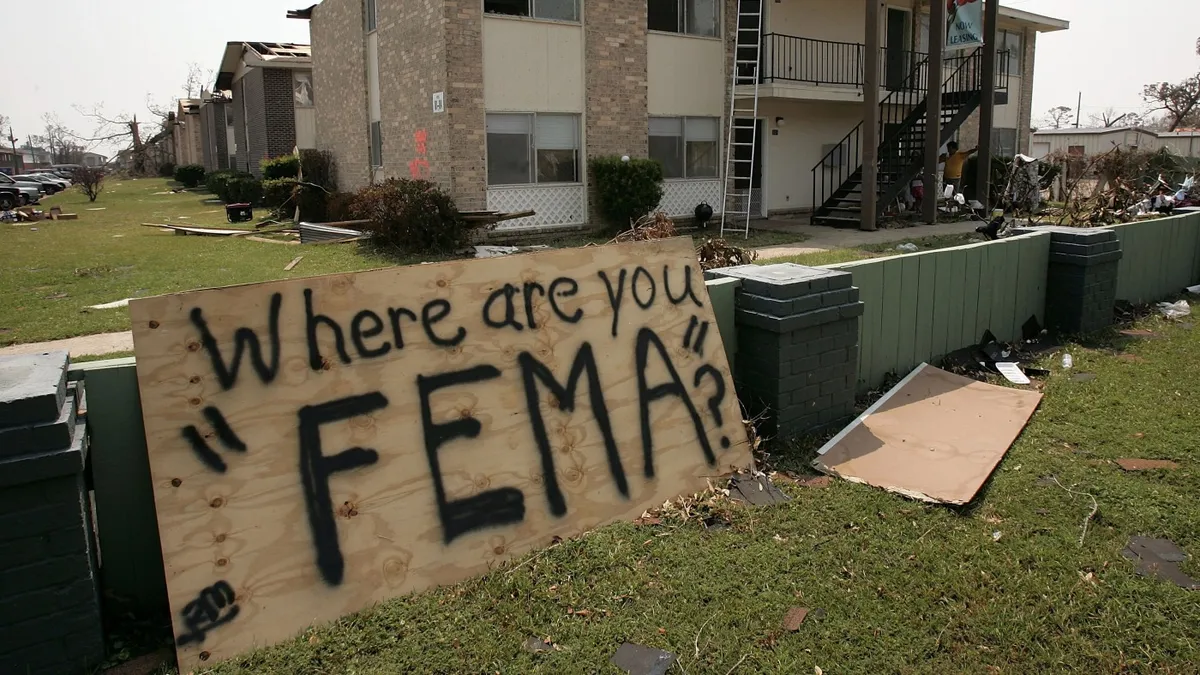
This week marks the 20th anniversary of Hurricane Katrina, a devastating storm that struck Louisiana and resulted in the loss of more than 1,300 lives and the displacement of tens of thousands. In the years since this catastrophic event, numerous studies and government reports have highlighted that a significant portion of the fatalities and destruction could have been mitigated. The levees, which were constructed and maintained by the federal government, failed during and after the storm, leading to extensive flooding in New Orleans. Local, state, and federal officials faced immense challenges in evacuating, rescuing, and housing residents in the hardest-hit regions of Louisiana and Mississippi. The shortcomings of the government’s response became immediately apparent.
In a speech delivered in New Orleans three weeks after the storm, then-President George W. Bush admitted the government's failure, stating, “The system, at every level of government, was not well-coordinated and was overwhelmed in the first few days.” Historian and Gulf Coast expert, Andy Horowitz, described Hurricane Katrina as “a catastrophic government failure by every measure.” The Federal Emergency Management Agency (FEMA), the nation’s primary disaster response agency, became the focal point of criticism regarding the inadequate response. Tasked with coordinating search and rescue operations, emergency shelters, mass evacuations, and debris removal, FEMA was notably delayed in providing assistance as survivors were left stranded on rooftops or navigating through chest-high waters in desperate attempts to find safety.
In the aftermath of Hurricane Katrina, the inadequacies of FEMA led to significant calls for reform, including a proposal to dismantle the agency. However, in 2006, Congress opted instead to strengthen FEMA, allocating more funding and expanding its authority to respond to future disasters more efficiently. One crucial reform mandated that FEMA's leader must possess a background in emergency management, a direct response to the lack of experience exhibited by then-Administrator Michael Brown, who had no relevant qualifications for managing disasters. This legislative shift was aimed at ensuring that future leaders of FEMA would be equipped to handle crises effectively, as noted by Chauncia Willis-Johnson, founder of the Institute for Diversity and Inclusion in Emergency Management.
Another significant change implemented after Hurricane Katrina allowed FEMA to act more swiftly during disasters. The agency was granted the authority to mobilize resources even before a formal request from local officials was made. This proactive approach ensures that assistance can be delivered promptly, as survival often hinges on time-sensitive actions. However, under the Trump administration, there have been concerns about delays in federal assistance, as evidenced by the slow response to tornadoes in Missouri and flash floods in Texas. Critics argue that the administration's policies have led to inefficiencies reminiscent of the pre-Katrina era.
One of the essential lessons learned post-Katrina is the importance of disaster preparedness. Over the past two decades, FEMA has expanded its focus from solely responding to disasters to also helping communities prepare for them. This shift includes funding for critical infrastructure projects such as flood walls and tornado warning systems. In 2018, Congress passed significant reforms that established a dedicated fund for disaster preparedness, emphasizing the need for preemptive measures in light of increasing severe weather events due to climate change.
Despite these advancements, the Trump administration has moved to roll back several of these reforms, arguing that federal spending on disaster preparedness is wasteful. Critics, including former FEMA leaders, warn that such changes could lead to increased suffering in the wake of future disasters. As Deanne Criswell, a former FEMA administrator under the Biden administration, articulated, the need for agility and preparedness is paramount in serving the American public.
The anniversary of Hurricane Katrina serves as a poignant reminder of the importance of effective disaster response and preparation. As we reflect on the lessons learned and the ongoing debates surrounding FEMA's role, it is crucial to prioritize the safety and well-being of communities vulnerable to natural disasters. The evolving landscape of emergency management underscores the need for continued vigilance, investment in preparedness, and a commitment to reforming systems that protect lives in times of crisis.